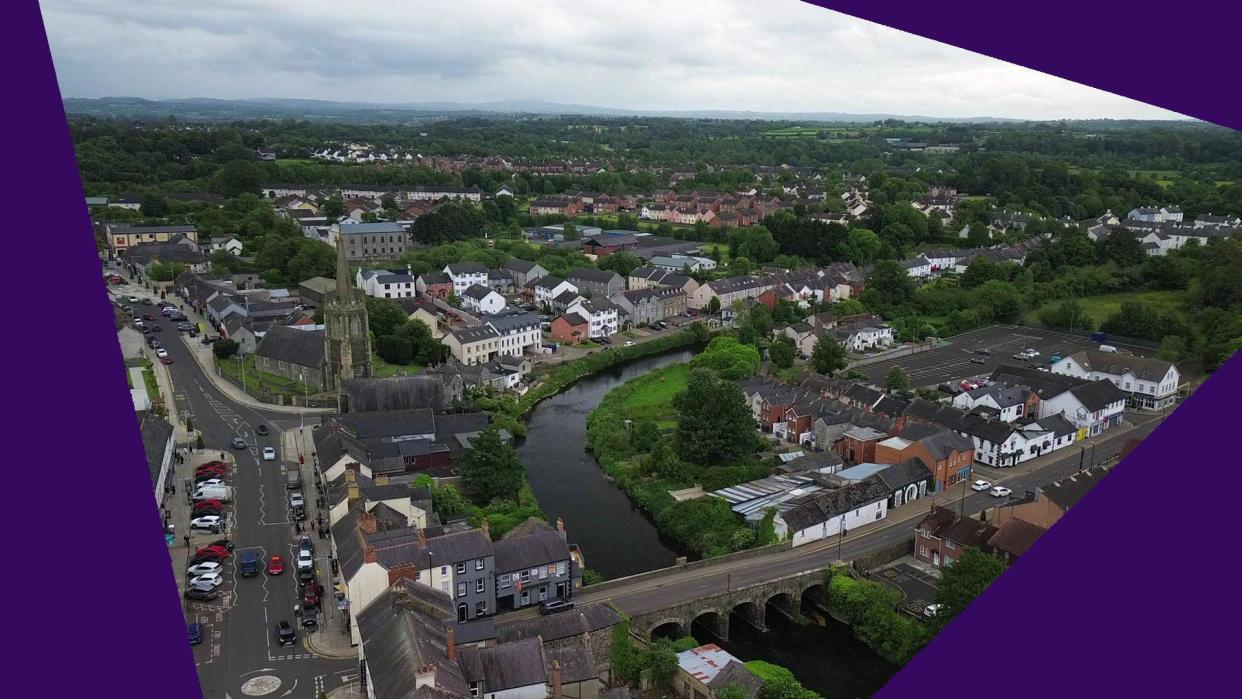Northern Ireland constituency profile: South Antrim

The story of unionism in the 2024 general election will not be told without South Antrim.
For decades, the constituency has been a battle between the Democratic Unionist Party (DUP) and the Ulster Unionist Party (UUP).
And while the DUP currently hold the seat, the UUP have made winning it back a key priority.
Meanwhile other parties, which have saw gains in the area in recent elections, are hoping to keep that momentum going.
Ahead of polling day on 4 July, here's a closer look at the contest in South Antrim.
What makes South Antrim a key constituency?
South Antrim takes in much of the area covered by Antrim and Newtownabbey Borough Council.
It includes the towns of Antrim, Ballyclare and Randalstown, and is also the location of Belfast International Airport.
The seat has always been held by a unionist - making it a key battleground within unionism.
But support in the area for Irish nationalist and other parties has been growing in recent elections.
What’s different from 2019?
Paul Girvan has held the seat for the DUP since 2017 after beating the UUP's Danny Kinahan.
But the Ulster Unionists have made winning back the seat their main target of this election.
The UUP's Robin Swann, a Stormont assembly member for the neighbouring North Antrim, has switched constituencies to run for Westminster.
And he has stepped down as health minister in Northern Ireland's devolved government to focus on the campaign.
It is a strategy that has sparked debate, given that Stormont's power-sharing institutions were restored just months ago.
Who are the candidates running in South Antrim?
John Blair - Alliance
Paul Girvan - DUP
Declan Kearney - Sinn Féin
Mel Lucas - TUV
Roisin Lynch - SDLP
Siobhan McErlean - Aontú
Robin Swann - UUP
Lesley Veronica - Green Party
Will boundary changes affect this constituency?
Not significantly, as more than 97% of the constituency remains unchanged, according to the House of Commons library.
South Antrim will now include some small areas that were previously part of the Belfast West and Lagan Valley constituencies.
Other small changes have been made along its boundaries with Belfast North and East Antrim.
The South Antrim constituency has an electorate of 71,646 people - about 270 fewer than under the previous boundaries.
With such small amendments, boundary changes will likely have little impact on the Westminster election result here.
Where will the battle be won or lost?
The DUP's Paul Girvan may have some benefit from incumbency.
He retained South Antrim in the last general election in 2019 with more than 15,000 votes - a share of more than 35%.
The Ulster Unionists came second with Danny Kinahan receiving more than 12,000 votes and 29%.
Moving Robin Swann to South Antrim is a bold strategy for the UUP, which is hoping to bank on his popularity as health minister during the Covid-19 pandemic.
But in 2019, both parties saw their vote share decline slightly compared to the previous Westminster poll in 2017.
In contrast, the Alliance Party's share more than doubled to over 19%.
Their candidate last time, Stormont assembly member John Blair, is standing again. Will the so-called "Alliance surge" of 2019 continue?
Sinn Féin has also seen its vote increase in recent assembly and council elections in the area.
Its local assembly member Declan Kearney, who came fourth in 2019, will be hoping to build upon recent results.
Meanwhile the larger unionist parties also face a challenge from Mel Lucas of Traditional Unionist Voice (TUV) and its campaign against post-Brexit trade checks.
Voters get only one choice in a general election, unlike Stormont assembly polls where candidates can be ranked in order of preference.
So that means for candidates on the ballot this time, convincing voters you can win is crucial to emerging on top.
Otherwise, voters may tactically coalesce behind other contenders.



